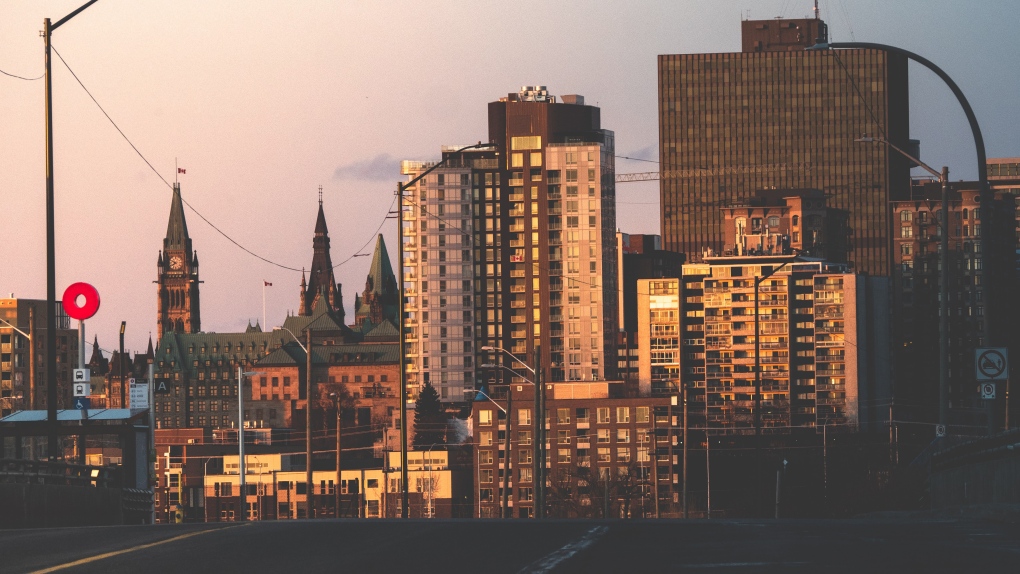
A new plan to “revolutionize” downtown Ottawa over the next 10 years is calling for a $500 million investment from all levels of government and the private sector to fund initiatives to make the “downtown desirable.”
The Ottawa Board of Trade released the new ‘Downtown Ottawa Action Agenda’ at Ottawa City Hall on Wednesday, calling for new public realm on Sparks Street and the ByWard Market, new housing, improving transit options and boosting marketing efforts “nationally and internationally” to boost economic activity and enhance downtown’s image.
“The Downtown Ottawa Action Agendaaims to reimagine and rejuvenate Downtown Ottawa, making it more diverse, resilient, and vibrant for generations and challenges to come,” the Ottawa Board of Trade said in a media release.
“Under the plan, Downtown Ottawa will see the addition of 40,000 new residents and the creation of 50,000 jobs by 2034, transforming the cityscape into a bustling hub of activity and innovation.”
The future of downtown Ottawa has been a hot topic since the start of the COVID-19 pandemic, as hybrid work policies allow people to work from home instead of offices in the core. Starting in September, the federal government will require workers to be in the office a minimum of three days a week.
The new action agenda says it wants to make downtown desirable by increasing the number of residents downtown, repurposing federal buildings for new uses and “make downtown resilient.”
The action plan recommends five immediate actions, including:
- Prioritize Housing: Streamlining processes to increase downtown residency through higher density and use of public land.
- Invest in the Future: Establishing financial mechanisms for ongoing downtown investment.
- Address Homelessness, Addiction, and Mental Health: Implementing focused programs with multi-level government funding.
- Improve Regional Mobility: Enhancing transit options to make downtown more accessible.
- Position Downtown Nationally and Internationally: Marketing efforts to boost economic activity and enhance downtown’s image.
The new Downtown Ottawa Action Agenda was developed by the Canadian Urban Institute in partnership with the city, Ottawa Tourism, Invest Ottawa, the National Capital Commission and BOMA Ottawa.
“This is more than a plan; it’s a renaissance for Ottawa’s downtown,” Sueling Ching, President and CEO of the Ottawa Board of Trade said in a statement.
“By fostering a live-work-play environment, we are not only boosting the local economy but also creating a culturally rich, inclusive, and accessible downtown for all to enjoy. And a capital city all Canadians can be proud of.”
The report says the $500 million Capital Investment Fund will “double down on key projects” that make downtown Ottawa “better connected, unique, and emblematic of what this place means to residents, workers – to everyone.” The Ottawa Board of Trade says the return on the $500 million investment is expected to be $1.3 billion a year within 10 years.
The Downtown Ottawa Action Agenda includes 16 actions and steps, under the headlines “Make downtown desirable,” ‘Make downtown resilient,” “Make downtown robust” and “Make downtown inclusive.”
The plan includes identifying and prioritizing the disposition of federal, provincial and municipal lands for affordable/supportive housing, greater residential densities in the downtown core and streamlining the approval process for new residential development to increase the number of people downtown. The federal government is urged to repurpose its buildings downtown as it looks to reduce its office footprint.
Under the “Make downtown resilient” plan, the report recommends identifying revenue sources for investment downtown and a “multi-sector” commitment for transit to boost mobility choices in the national capital region. The federal and Ontario governments are urged to provide funding to support OC Transpo and identify ways to incentivize transit and boost transit ridership during periods of low ridership.
The report also recommends prioritizing the implementation of the ByWard Market and Spark Street Public Realm plans, and identify and secure resources to invest in climate-adaptive public realm improvements.